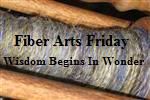The blow has been happening earlier and earlier. It used to be in April/May. We used to call May "The Merry Month of Molting." So to be well into blowing now is crazy.
Anyway, since I was chatting with a LGD friend this morning about grooming, I figure it's a good time to talk about tools.
Tibetan Mastiffs, like other Livestock Guardian breeds have a double-coat.
The harsh outer coat (guard hair) sheds water, therefore keeping the dog dry in rain or snow. The soft undercoat (down, cashmere, wool) keeps the dog warm. The outer coat is longer than the under coat. The length difference is essential to the functionality of the coat and one of the primary reasons for not shaving a double-coated dog.
Once the undercoat has been shed out, the outer coat works to keep the dog cool in the summer. Think of why people wear robes in the desert.
This double-coat operates the same for other animals like Yak, Bison, Goat, and Musk Ox. If you've ever had the opportunity to wear cashmere, yak or bison down, or qiviut you know how soft and warm it is.
Cashmere, down, and qiviut are collected by hand to ensure the outer coat is left behind. The same is true for double-coated dogs (chiengora).
If you're a regular reader of this blog, you know that I collect our Tibetan Mastiffs' undercoat, as well as spin and knit with it.
There are three basic tools I use: de-matting tool, comb, and undercoat rake.
None of these tools are expensive; generally between $5 and $15 US.
I do own several types of rakes. They have different tine lengths and spacing. Some have spinning tines or multiple rows of tines. I use them on different dogs and different parts of the dogs.
The most important thing about the rake is to get one that is long enough. Ideally the tines should match the length of your dog's coat. This allows you to pull out the deepest undercoat, which is especially important for preventing matting on dogs with less than a correct coat.
With respect to the de-matting tool, I like the ones with a curved cutting edge and mat-breakers between the tines. This tool is an efficient remover of ear mats, which we get because we use head collars.
I use the comb for the short fibers on their legs.
We also have a grooming table, arm, and loop. These are not necessary. I use them because we have several dogs and show them in conformation events. Which means I do a lot of grooming. So the table helps my back go the distance. ;-)
Then it's just on to brushing. Which ever side or end they like works for me. Each dog usually requires at least a few sessions. So I brush them for as long as they are willing or time allows.
You can see how effective one stroke with a good rake can be.
But she looks much better after about 15 minutes of brushing with the above rake.
Even if your dog has a correct coat or don't plan to spin the undercoat, I recommend spending time brushing them.... for as long as they will let you. It does wonders for building your relationship.... even if they do try their best Jedi Mind Trick... You are done brushing me.... you will let me go back to work so I can bark at whatever is going on out there... :-)
One final thought. A lot of people talk about the Furminator. I see they carry a rake now, but the traditional Furminator de-shedding tool is a stripping tool, and not appropriate for a double-coated breed. This tool will cut the outer coat rendering it useless for shedding water (see my note above about shaving). However, this was the best tool for our former Shar-pei/Rottweiler.













1 comment:
This article gives the light in which we can observe the reality. This is very nice one and gives indepth information. Thanks for this nice article. grooming tools
Post a Comment